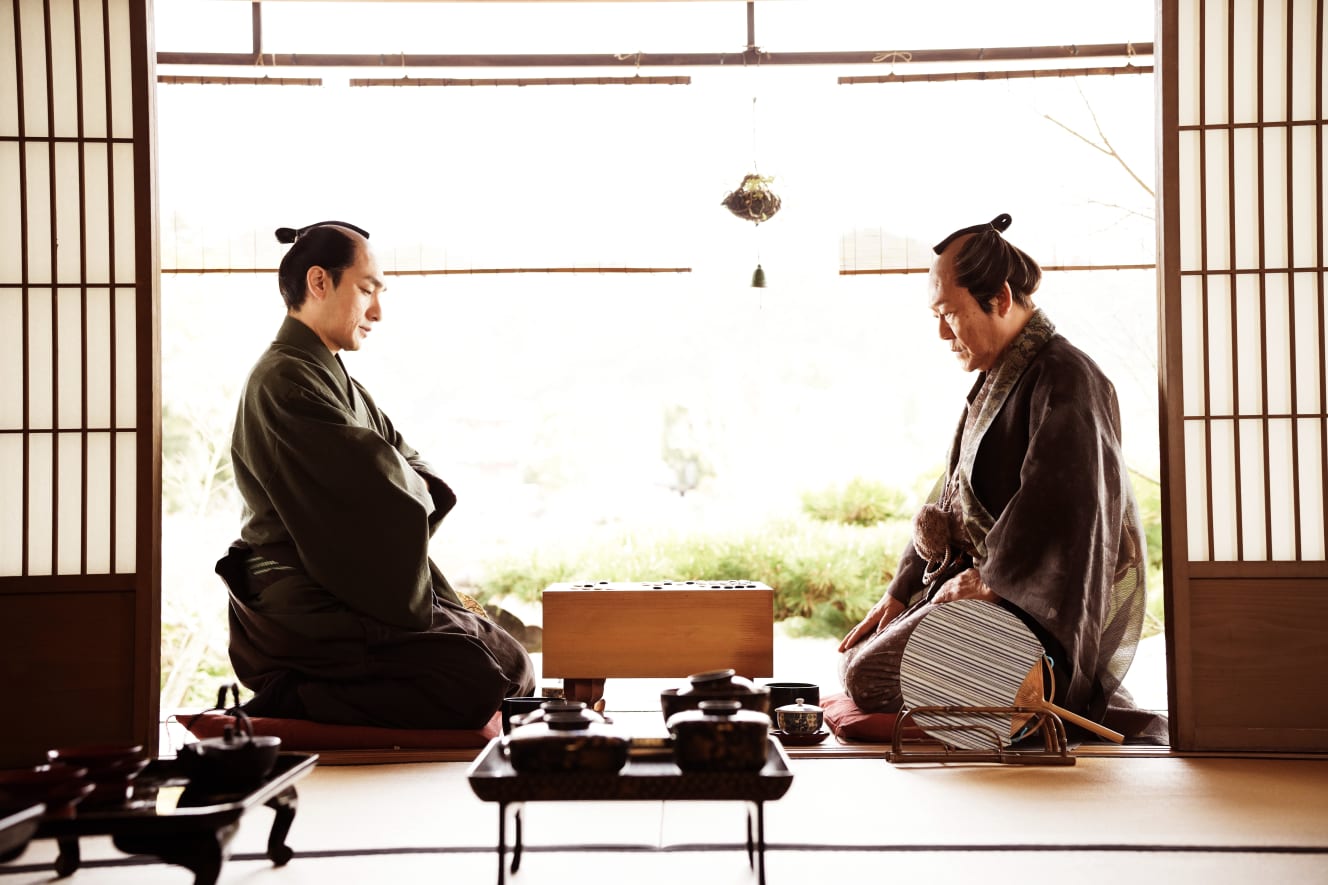Director Kazuya Shiraishi’s Journey into Historical Dramas and the Prideful Aesthetic
In “Gobangiri,” we depict two entirely different types of battle: the physical combat involving swords and the strategic battle on the Goban (Go board). Especially with Go, there are no intense physical movements; instead, we convey a quiet yet sharp battle through the sounds and gazes as stones are placed on the board.
“This aspect was quite challenging. Unlike shogi or chess, where pieces move, and the rules are somewhat easier to grasp, Go is a bit more complex. So, we deliberated on how much explanation is necessary, and how to ensure both beginners and enthusiasts of Go can enjoy the depiction.”
By the way, the director’s experience with Go is,
“Well, I just know the rules to some extent (laughs).”
“The Go stones come in two colors, black and white. I thought the strong contrast between them could be a weapon in terms of visuals. And I was most conscious of wanting to capture the beauty of the moment when the stones are placed, utilizing the movements of the hands and the spaces between them.”
The rakugo “Yanagita Kakunosuke” is what you might call a human drama. The director mentioned feeling entertained by the script, but do they consciously emphasize “entertainment” regardless of the genre? When asked about it,
“That’s the only way I intend to shoot.”
“Just because it’s a human drama doesn’t mean it has to be a tearjerker, and in any case, I always aim to entertain in every work.”
“If it weren’t for Tsuyoshi Kusanagi, I might not have ventured into period dramas.”
The meticulousness permeating Shiraishi’s works extends even to such aspects in period dramas.
“In all my works, I never feel the allure of looking cool through makeup. I still love films where actors shine more as they get dirtier and roughed up during the makeup process.”
The transformation in appearance of the protagonist Kakunosuke in the latter part of the film is exactly this “makeunder.”
“After Kakunosuke sets out for revenge, his beard grows unkempt, he stops shaving, and he gets dirty with dust, but he’s incredibly cool.
Ah, I felt like, ‘I wanted to shoot someone like this,’ which is why I wanted to try my hand at period dramas.”
The expression of Tsuyoshi Kusanagi in this film, quietly burning with intensity, is very striking. With the lingering impression of his cheerful and dynamic portrayal of the composer Yoshikazu Hatotori in the NHK morning drama “Boogie Woogie,” aired until March, the contrast is profound.
“That’s precisely the breadth of Kusanagi-san’s range. It’s natural, yet somehow elusive. He’s an amazing actor. You can understand without changing his expression.
I think he’s already reached the level of Toshiro Mifune. It’s the ultimate way of being an actor that still communicates, and I believe that’s what the ultimate form of an actor is.”
